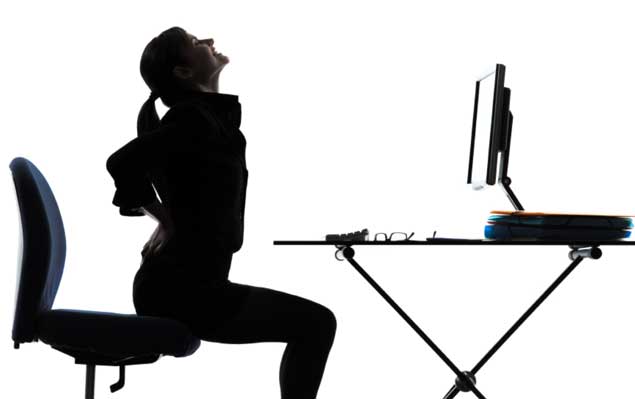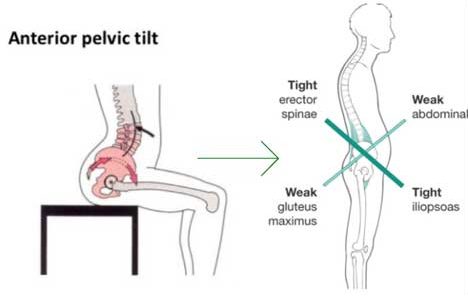Sit Happens – Sitting Can Hurt Us More Than You Think!
- Edgard Diaz
- May 11, 2018
 One major detriment to long periods of sitting is the effect on your posture, flexibility, mobility, and joint health.
One major detriment to long periods of sitting is the effect on your posture, flexibility, mobility, and joint health.
Sitting correlates to lower back pain
Probably the biggest single problem from sitting all day that podiastists see is lower back pain. As we sit in a fixed position for such a long period of time our hip flexors (groin muscles) and lumbar erectae muscles shorten and tighten. When we stand after sitting all day, the hips need to move, but their natural mobility is limited by muscle tightness. That movement needs to come somewhere, so it comes from the spine and the result is lower back pain.
What can we do to combat this tightness of the lower back?
Of course the essential course of action to avoid lower back pain at the workplace is to uphold ergonomic workplace standards, ensure repetitive work is allocated evenly across staff, never attempt to lift heavy loads by yourself and take regular breaks to take the strain of your back.
From a biomechanical podiatry perspective we can stretch the lumbar erector spine and hip flexors and strengthen our abdominal muscles (core) and gluteus to restore proper alignment and function of the body. However this may not be enough.
 When we stand after sitting for a long time we are forced into an anterior tilt position and sometimes stretching and strengthening is not enough.
When we stand after sitting for a long time we are forced into an anterior tilt position and sometimes stretching and strengthening is not enough.
Orthotics are corrective medically prescribed innersoles designed to support, control and align the foot whilst correcting mechanical issues from the feet up; treating the cause. Use of Orthotic therapy is an excellent treatment regime as it will realign the biomechanical structure and control the excess pronation of the foot, eliminating the tractional pull that occur at the muscles such as the hip flexors and erector spine. Orthotics will also stabilise the body and reduce tension on joints reducing muscular fatigue in the process.
Did you know?
A recent worldwide study led by the University of Sydney has proven that lower back pain is the most commonly recorded of workplace injuries, ranking higher than any other condition including cardiac disease and depression. Often both severe and costly (around 4.8 billion a year), back injuries can arise from a number of ergonomic exposures including heavy lifting, forceful movement, awkward positions and poor workstation set up.
Does sciatica affect you?
Sciatica refers to back (lumbar area) pain caused by a problem with the sciatic nerve. This is a large nerve that runs from the lower back down the back of each leg which is often impinged by deep tight glut/ piriformus muscles. A person experiencing sciatica may feel weakness, numbness, tingling and burning sensations down the leg. The pain worsens in a seated position, especially for men who sit on their wallets all day in an office or whilst driving.


